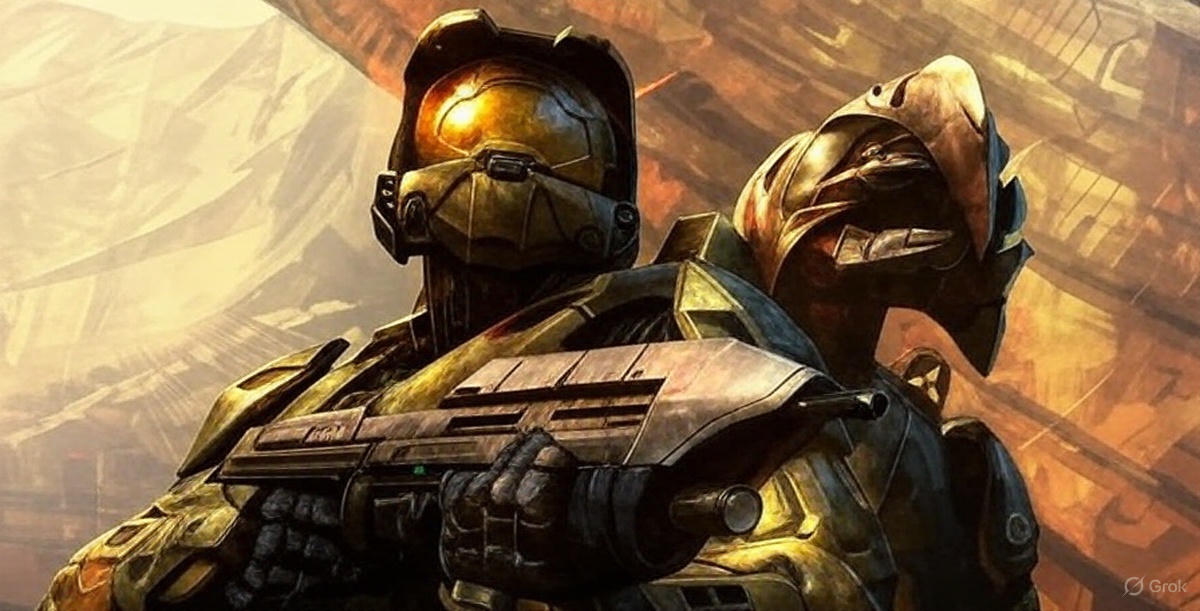GameStop’s Iconic Halo 3 Mural: A Nostalgic Tribute to Gaming History
Introduction
On October 6, 2025, GameStop unexpectedly became the center of online gaming conversations. A post by @CultureCrave highlighted a Glendale, Colorado store that still proudly displays a Halo 3 mural from 2007. The mural, featuring Master Chief amid epic battlefield visuals, has remained untouched for nearly 18 years. GameStop’s cheeky comment—“We’ll take it down when something better comes out”—has fans laughing, reminiscing, and debating the mural’s significance in modern gaming culture.
GameStop's response to one of their stores still having a 'Halo 3' mural from 2007:
— Culture Crave 🍿 (@CultureCrave) October 6, 2025
"We'll take it down when something better comes out" pic.twitter.com/CrXaBtNsA6
The Mural and Its Legacy
The mural is more than a promotional display—it’s a symbol of gaming history. Halo 3, released by Bungie in 2007, revolutionized multiplayer gameplay and storytelling in first-person shooters. The mural immortalizes this landmark title in a physical retail space, reminding gamers of an era when stores like GameStop were cultural hubs for midnight launches and in-person community events.
With its brick facade and teal awning, the Glendale GameStop store stands as a visual time capsule, combining nostalgia and brand identity. GameStop’s retention of the mural emphasizes its dedication to both history and gamer loyalty.
Public Reaction and Cultural Impact
The post quickly went viral, receiving over 68,000 likes on X. Gamers praised the mural, some calling it a “national landmark,” while others shared memories of long-standing game posters and murals in their local stores. The response highlights a broader trend of nostalgia in gaming, where long-loved titles continue to resonate more deeply than modern releases.
Gamers also engaged in debates about whether any game in the last 18 years surpasses Halo 3, underlining the title’s lasting cultural and emotional significance.
Broader Implications for GameStop and Gaming
GameStop’s decision to retain the mural reflects both strategic branding and emotional engagement. In an era of digital marketplaces, physical retail stores have struggled to maintain relevance. By celebrating its legacy and connecting with longtime fans, GameStop reinforces its identity as more than just a store—it’s a guardian of gaming culture.
This mural also sparks discussions about nostalgia-driven marketing, the longevity of physical gaming memorabilia, and the way iconic games influence future generations.
A GameStop in Colorado still has the Halo 3 mural up from 2007
— Dexerto (@Dexerto) October 6, 2025
"We’ll take it down when something better comes out" pic.twitter.com/iKRQpuuLyP
FAQs
- Where is the GameStop Halo 3 mural located?
- The mural is at a GameStop store in Glendale, Colorado.
- How long has the mural been up?
- Since 2007—nearly 18 years as of 2025.
- Why is the mural significant?
- It commemorates Halo 3, a landmark first-person shooter, and symbolizes gaming nostalgia and culture.
- Will the mural be removed soon?
- GameStop has humorously stated it will be removed “when something better comes out,” suggesting it may remain for the foreseeable future.
- How has the public reacted?
- Fans expressed amusement, nostalgia, and admiration, sparking viral online discussions about gaming history and cultural impact.
Opinion
The enduring presence of GameStop’s Halo 3 mural exemplifies the intersection of nostalgia, culture, and marketing strategy in the gaming industry. It raises intriguing questions: Why do physical artifacts hold emotional power in an increasingly digital world? How does nostalgia shape consumer behavior and brand perception?
In this context, the mural functions not merely as decoration but as a cultural artifact, preserving the social and communal aspects of gaming that modern digital platforms struggle to replicate. Its longevity challenges developers and retailers alike to consider the lasting influence of their creations and marketing choices.
Ultimately, the GameStop mural is more than a marketing gimmick—it is a touchstone of collective memory, reminding us that some pieces of pop culture transcend their immediate commercial purpose, becoming symbols of identity, memory, and shared experience. As long as Master Chief stands on those windows, gamers are invited to reflect on the past, celebrate the present, and question the future trajectory of gaming culture.


0 comments